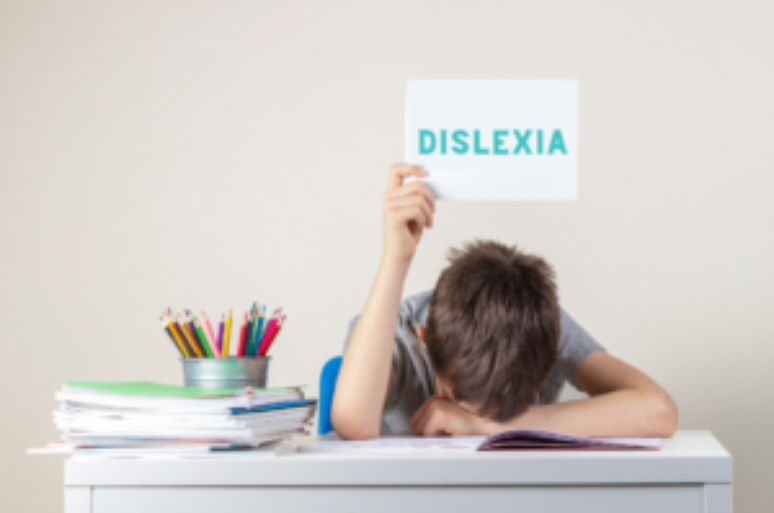What is Dyslexia? To begin with, it’s important that you understand that dyslexia is more common than we think. According to the Associação Brasileira de Dyslexia (ABD), it is found between 5 and 17% of students in classrooms. […]
What is Dyslexia?
To begin with, it’s important that you understand that dyslexia is more common than we think. According to the Associação Brasileira de Dyslexia (ABD), it is found in between 5 and 17% of students in classrooms around the world. That is, many children and young people are struggling in classrooms with only a small percentage of the ability, what would be considered the standard, to decode messages. It exists in different degrees and has different therapeutic approaches to improve the difficulty. So, to talk about dyslexia, we called a neurology specialist, the doctor
Fernando Gomes*
. Explain what the causes are, how the diagnosis is made, and possible treatments. Keep reading! Dyslexia is a genetic condition with a neurobiological onset. It is characterized by difficulty in decoding codes. That is, it causes the individual to have learning difficulties. Thus, the person has difficulty writing and reading words. It is a challenge for dyslexics to assemble words, focus on the order of letters to form that language. Furthermore, it is also common to have a very characteristic symptom of the condition, which is the disorderly exchange of letters, both in reading and writing. People who have these difficulties can be bullied by those who are unaware of the problem and associate dyslexia with intelligence. In this sense, dyslexia is nothing more than a genetic disease and has nothing to do with intelligence quotient (IQ). Each individual has their own characteristics, for example a person who does not perform well in Portuguese related subjects may be well developed in various calculations and with the dyslexic this would be no different. This thinking follows the logic of individual abilities and aptitudes. The condition is seen mainly in males but is not extinct in females, although the ratio is 3:1. That is, for every 3 boys with dyslexia, there is only 1 girl. Also, there are different degrees of the congenital condition. In this context, there can be different levels of difficulty that can affect individuals, being more or less serious.
What are the most common types of dyslexia?
Check out the most common types of dyslexia in children and adults below:
- visual dyslexia: it is characterized by the difficulty in visualizing words, distinguishing directions such as right and left;
- Auditory dyslexia: This type affects the perception of different sounds, which can cause speech impairment.
- mixed dyslexia: it is a mixture of others, commonly merging the previous two, visual and auditory.
html[data-range=”xlarge”] figure image img.img-ad8093489abbeb42a5ed0d69ddd6419ay3x4fxzy { width: 774px; height: 513px; }HTML[data-range=”large”] figure image img.img-ad8093489abbeb42a5ed0d69ddd6419ay3x4fxzy { width: 548px; height: 364px; }HTML[data-range=”small”] figure figure img.img-ad8093489abbeb42a5ed0d69ddd6419ay3x4fxzy, html[data-range=”medium”] figure image img.img-ad8093489abbeb42a5ed0d69ddd6419ay3x4fxzy { width: 564px; height: 374px; }
How to identify it?
The manifestation of the condition will vary depending on the aspects of the condition. As stated earlier, there are different levels and types of modifications. These signs are evident mainly from the stage in which the child begins to be literate. At this stage, parents can identify some of the more common signs that can make a difference when making a diagnosis with a health professional. The main ones are:
- difficulty reading, writing, and may also have difficulty spelling words;
- challenge in reading comprehension of books and questions;
- problems recognizing symbols;
- word disorganization, such as reversing, swapping, or adding letters;
- problems with temporal and spatial organization, as well as having motor coordination difficulties;
- difficulty concentrating on general tasks.
According to neurosurgeon Fernando Gomes, attention is the cognitive gateway to our brain, all information and experiences are there.
“When there is an impairment in a child’s daily life due to a change in attention span, we understand the need to seek a health care professional and definitively establish treatment”he says.
Observing the child is one of the main steps in identifying a condition that is causing discomfort and difficulty in daily activities. A child is not always “lazy” or “not paying attention because he doesn’t want to”. They are often grappling with challenges that many do not understand and it is the duty of those in charge to be aware of that individual’s development. The sooner dyslexia is identified, the quicker the treatment necessary to reduce the person’s difficulties will be discovered and implemented. Early diagnosis is of great importance, as it prevents that child from going through derogatory processes that could negatively affect his self-esteem. And it’s not just children we need to be aware of, there are cases of adults who have been diagnosed late and, with proper follow-up, have managed to break down barriers.
How is dyslexia diagnosed?
The diagnosis can be made by a multidisciplinary team, composed of neurologists, psychologists and speech therapists. Upon meeting with the specialists, the individual will undergo a series of tests of vision, hearing, cognitive performance, among others. It is important to take your child to the doctor so that the condition is correctly identified, as dyslexia can show symptoms of other disorders already known such as attention deficit disorder.
What are the treatments for dyslexia?
Dyslexia is a condition that has no cure. However, it is possible to find treatments that ease the difficulty the individual is going through. As mentioned above, teamwork is required. That is, you need to have the help of trained professionals as well as the help of the children’s parents and/or guardians. Healthcare professionals will create tools, together with the person, to improve writing and reading barriers. Although a diagnosis of an incurable condition is daunting, it is possible to lead a normal life, following the strategies created by doctors, speech therapists, psychologists, among others.
*Dr. Fernando Gomes, neurosurgeon, neuroscientist, professor at the Hospital das Clinicas de SP, communicator and author of 8 books
Source: Terra
Ben Stock is a lifestyle journalist and author at Gossipify. He writes about topics such as health, wellness, travel, food and home decor. He provides practical advice and inspiration to improve well-being, keeps readers up to date with latest lifestyle news and trends, known for his engaging writing style, in-depth analysis and unique perspectives.








